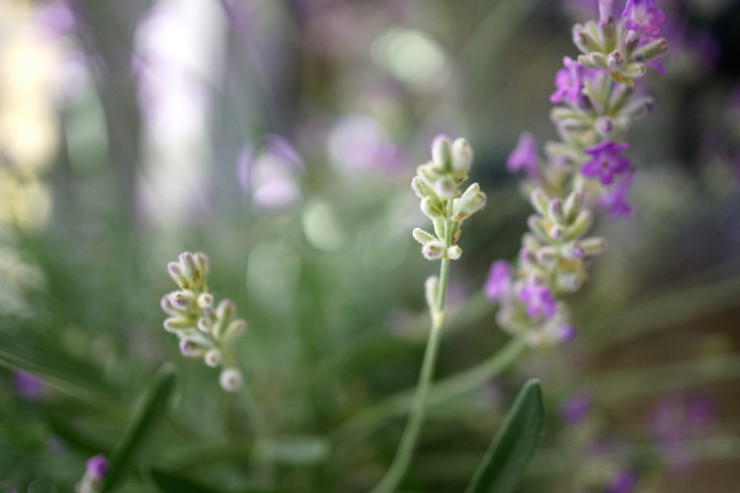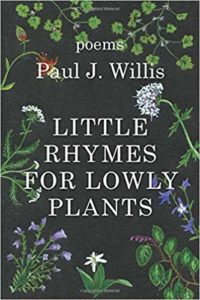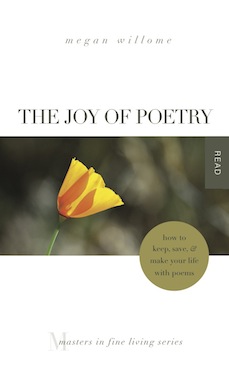“In common things that round us lie
Some random truths he can impart,
—The harvest of a quiet eye”
—William Wordsworth
Chapter 4 of Reader, Come Home begins with this quote from Wordsworth’s A Poet’s Epitaph, part of his Lyrical Ballads. Author Maryanne Wolf goes on to say the best way to nurture that “harvest of a quiet eye” is to read poetry. I spent March reading and rereading Paul J. Willis’ new collection, Little Rhymes for Lowly Plants.
I was familiar with Willis because I’d planned to use his poem “Piano” in The Joy of Poetry, but it dropped off in the revision. He was so gracious about the whole thing. Willis’ new collection promised depth, whimsy, and rhyme.
Most of the poems I’ve learned By Heart include rhyme, and memorizing the nine I have so far has revealed a shocking lack of rhyme in my life. So, little rhymes? Lowly plants? Just in time for Poetic Earth Month? Yes, please!
Willis’ poems invite us to read deeply about specific plants (scientific names often included) in specific places, often a national park, forest or recreation area. I looked up every plant and place mentioned, most of which are in California. Section II has many poems inspired by the bible, including its stones, deserts, and hills.
Rhymed poetry and form poetry — section III is almost all sonnets — give us both the comfort of familiarity of anticipating the rhyme and the surprise of actually finding it. “Soft Air” is about El Niño, a weather phenomenon that affects how much rain we will get, which is always a concern in the West. Willis, in these six lines, describes something I’ve often tried to write about and failed to convey — how when the land and its people are in drought, we’ll count even mist as rain.
But mist (how missed) is mist enough for us,
a promise not quite kept, a ring inside
a box that may unclose an empty haze.
For still we see the suitor on his knee,
his open hand held up as if to catch
first drops of rain from our unclouded gaze.
This month, Poetic Earth Month, Tweetspeak Poetry invites you to “read and write the world with us poetically” in our 30 Days, 30 Poems Challenge. Read a poem a day. Write a poem a day. Or do both. Cultivate “the harvest of quiet eye.”
And all you poets out there, consider following Willis’ lead and write rhymes, even little ones.
The epigraph for Little Rhymes for Lowly Plants is from Shakespeare’s Love’s Labor’s Lost:
Dumaine: In reason nothing.
Berowne: Something then in rhyme.
March’s Pages
Finished
Poetry
Little Rhymes for Lowly Plants, Paul J. Willis
Adult
“Clemency as the Soul of the Constitution” in The Journal of Law & Politics, Mark Osler (Does a long journal article count? I’m counting it.)
Kristin Lavransdatter, Sigrid Undset
The Fifth Season, N.K. Jemisin
Early Readers and Picture Books
Wangari Maathai: The Woman Who Planted Millions of Trees, Franck Prévot, illus. Aurélia Fronty (a future book club selection)
Wolf in the Snow, Matthew Cordell (Join us for Children’s Book Club, April 12!)
Middle Grade and YA
Attachments, Rainbow Rowell (This was labeled YA, but all the characters are out of college.)
Made Progress
The Odyssey, Homer, transl. Emily Wilson (only one chapter left as I read and listen along with Overdue’s Stop! Homer Time)
Your turn
1. Join us in the 30 Day Challenge for Poetic Earth Month. For plants’ sake.
2. Have you tried writing rhymed poetry? If not, start by reading poems that rhyme.
3. Did you make some time for deep reading this month? What stories stirred your soul?
4. Share your March pages. Sliced, started, and abandoned are all fair game.
Photo by Rosmarie Voegtli,Creative Commons, via Flickr. Post by Megan Willome, author of The Joy of Poetry.
“Megan Willome’s The Joy of Poetry is not a long book, but it took me longer to read than I expected, because I kept stopping to savor poems and passages, to make note of books mentioned, and to compare Willome’s journey into poetry to my own. The book is many things. An unpretentious, funny, and poignant memoir. A defense of poetry, a response to literature that has touched her life, and a manual on how to write poetry. It’s also the story of a daughter who loses her mother to cancer. The author links these things into a narrative much like that of a novel. I loved this book. As soon as I finished, I began reading it again.”
—David Lee Garrison, author of Playing Bach in the D. C. Metro
- Perspective: The Two, The Only: Calvin and Hobbes - December 16, 2022
- Children’s Book Club: A Very Haunted Christmas - December 9, 2022
- By Heart: ‘The night is darkening round me’ by Emily Brontë - December 2, 2022



Glynn says
I started the 30-Day Challenge late – on Wednesday – and so far I’ve found a daffodil and hugged a tree. Sort of.
Reading for March:
Non-fiction
City of a Million Dreams by Jason Berry
Mystery
Black & Blue by Emma Jameson
The Arsenal Stadium Mystery
The Auschwitz Violinist by Jonathan Dunsky
The Hardy Boys: The House on a Cliff by Franklin W. Dixon
Night Work by Brett Battles
Power in the Blood by Michael Lister
Fiction
A Stranger on My Land by Sandra Melville Hart
Proven Love by Mary Manners
Friendly Persuasion by Jo Huddleston
A Friend in Paris by Jennifer Goutet
West of Here by Jonathan Evison
Bending Toward the Sun by Mona Hodgson
Paris in the Present Tense by Mark Helprin
Poetry
Invitation to Poetry by Mihai Brinas
The Crossing Over by Jen Karetnick
A Child’s Year by Chris Yokel
The Banished Immortal: A Life of Li Bao by Ha Jin
Insistence by Ailbhe Darcy
Feel Free by Nick Laird
The Drum That Beats Within Us by Mike Bond
Megan Willome says
You did sorta hug a tree, Glynn. I’m writing along too, but you’re sharing.
I spy a Hardy Boys! One year we bought my son a huge stack of them at the library book sale, and he devoured them.
Maureen says
I finished “Hue”; it’s a fine history that will leave you angered by our government’s actions in Vietnam.
I read “Educated” a memoir by Tara Westover. I haven’t yet put my finger on what it is, but something about this book bothers me. She had a childhood in hell.
I’m about half-way through “Ninth Street Women”; it’s thorough and fascinating.
Lots of poetry or related books on my table, including Dean Young’s “The Art of Recklessness: Poetry as Assertive Force and Contradiction”; Benjamin Myers’s “Black Sunday”; Anders Carlson-Wee’s “The Low Passions”.
I’ve just ordered Carolyn Forche’s memoir “What You Have Heard Is True”; and a number of poetry collections by T. (Tony) Crunk, whose poems I discovered through my Lent reading.
I’ve also undertaken to write 40 poems over 40 days but am behind again, which is ok.
Maureen says
I’ve also ordered Naomi Shihab Nye’s “The Tiny Journalist”.
Megan Willome says
Maureen, I just looked up that one. Sounds amazing!
I keep hoping I’ll get an opportunity to hear Naomi Shihab Nye in person. I only live 60 miles away from San Antonio. Maybe this new release will provide an opportunity.